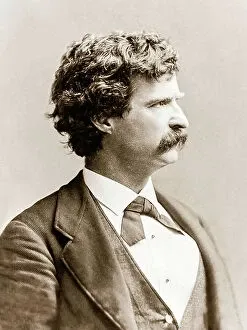Upon arriving in New York City in November of 1867, Sam took a short-lived Secretaryship with Senator Stewart until December 16, 1867.
Leonard writes: Somewhere in the Nevada, California, and Hawai‘i years, as well as the 1867 Quaker City tour and some time spent doing successful lecturing, Sam finally followed Orion’s example by turning Republican — meaning that he supported the now-accomplished emancipation of slaves, the establishment of their rights as free men and women, and an additional agenda designed to undergird the interests of northern industry and commerce. The Republican Party, though based in a humanitarian impulse (the end of slavery), was clearly the party of big business, and Mark Twain’s association with it coincided with his own accession to the world of the affluent few. [Mark Twain in Context] & Page 442-3
See The Life of Mark Twain: The Early Years, 1835-1871: Pages 442-3 and 458-9)
Despite the heavy burden of work that faced him, it is nevertheless clear that Mark Twain had determined, even before his arrival, to lecture in California and Nevada, covering, in general, the same itinerary as his 1866 tour. He needed money, and he knew that no other activity promised so lucrative and quick a financial return as the platform. He lost no time in making his plans known. In reporting his arrival in San Francisco, the Alta California announced on April 3 that the genial and jolly humorist proposed to lecture in a few days. (Lorch, p. 74)
April 17 – 29, 1868 - Lecture Tour, California and Nevada: at least 7 engagements - "Pilgrim Life"
Clemens took the California Steam Navigation Company’s daily steamer to Sacramento on 16 April, where he lectured the following night. After also lecturing in nearby Marysville (18 April), Nevada City (20 April), and Grass Valley (21 April), he returned to Sacramento, and on 23 April took the 6:30 a.m. Central Pacific train for Nevada (Langley 1867, “Advertising Department,” vii; “Railroads and Stages,” San Francisco Alta California, 23 Apr 68, 4).
To Samuel Williams 14 April 1868 • San Francisco, Calif.
November 17, 1868 - March 3, 1869 Eastern Lecture Tour: at least 43 engagements - "The American Vandal Abroad" Partially managed by G. L. Torbert and by Clemens himself,.
Twain began the tour in Cleveland. He worked on this first lecture with Mary Fairbanks before starting out as much was riding on his success as a lecturer in the East.
